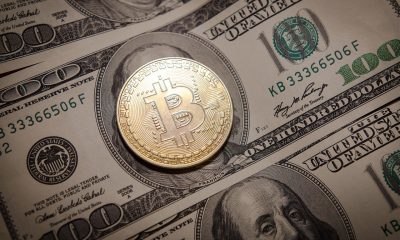Bitcoin
This US Senator is Mining Bitcoin in Texas

This week, the Bitcoin mining industry achieved significant milestones with critical political support.
A prominent US senator joined the sector, and Oklahoma passed key legislation favoring its growth. The convergence of these events marks an important step for the industry, reflecting increasing mainstream acceptance.
Bitcoin Mining Gains More Political Backing
On May 31, Senator Ted Cruz announced the acquisition and operational start of three Bitcoin miners in Iraan, Texas. Marathon Digital CEO Fred Thiel praised Cruz’s initiative, welcoming him to the Bitcoin mining community and highlighting his role in securing the network.
“Welcome to the ranks of Bitcoin miners! Thank you for helping to secure the Bitcoin network,” Thiel remarked.
Cruz has long been a vocal advocate for Bitcoin mining. Last year, he pointed out its benefits during a Texas heatwave, noting its flexibility to divert energy during emergencies. Cruz said machines can be shut down quickly during extreme weather to divert energy to critical needs like hospitals and homes.
This latest move underlines Senator’s ongoing commitment to the cryptocurrency industry. He has consistently championed crypto adoption, including proposing accepting crypto donations for his campaign. Notably, Cruz holds a substantial amount of Bitcoin, having purchased $50,000 in 2022.
Read more: Bitcoin Mining From Home: Is It Possible in 2024?
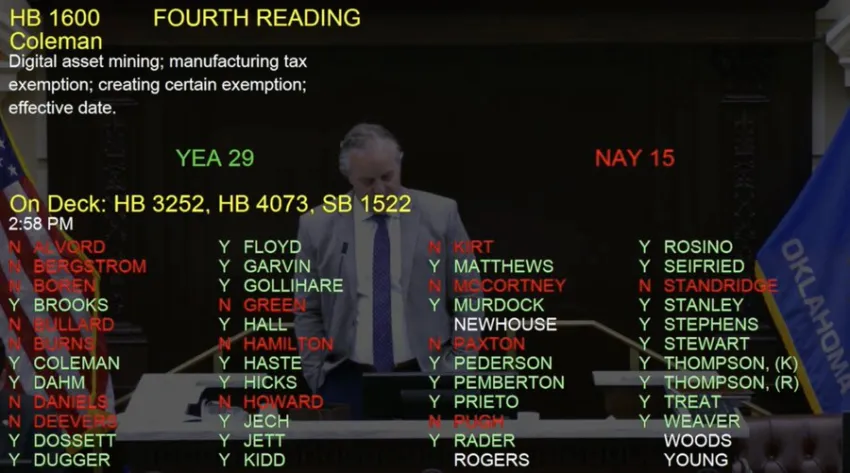
In related news, Oklahoma lawmakers passed House Bill 1600 on May 30, offering tax credits to digital asset mining operations. The bill, pending the governor’s signature, aims to exempt commercial mining machinery from taxes, including servers, computers, and transformers.
The Oklahoma Bitcoin Association stressed the bill’s significance, stating it would make state power prices highly competitive for miners and attract investments revitalizing rural areas. The bill is expected to optimize Oklahoma’s electricity grid and reduce power costs for residents.
“This bill will optimize the Oklahoma electricity grid [and] place downward pressure on power prices for all Oklahomans. It would also diversify the economic activity of the state,” the association added.
This legislative support follows Bitcoin Bill of Rights, which protects individuals’ rights to self-custody digital assets, engage in mining, operate full nodes, and trade digital assets.
Disclaimer
In adherence to the Trust Project guidelines, BeInCrypto is committed to unbiased, transparent reporting. This news article aims to provide accurate, timely information. However, readers are advised to verify facts independently and consult with a professional before making any decisions based on this content. Please note that our Terms and Conditions, Privacy Policy, and Disclaimers have been updated.
Bitcoin
What It Means for Bitcoin
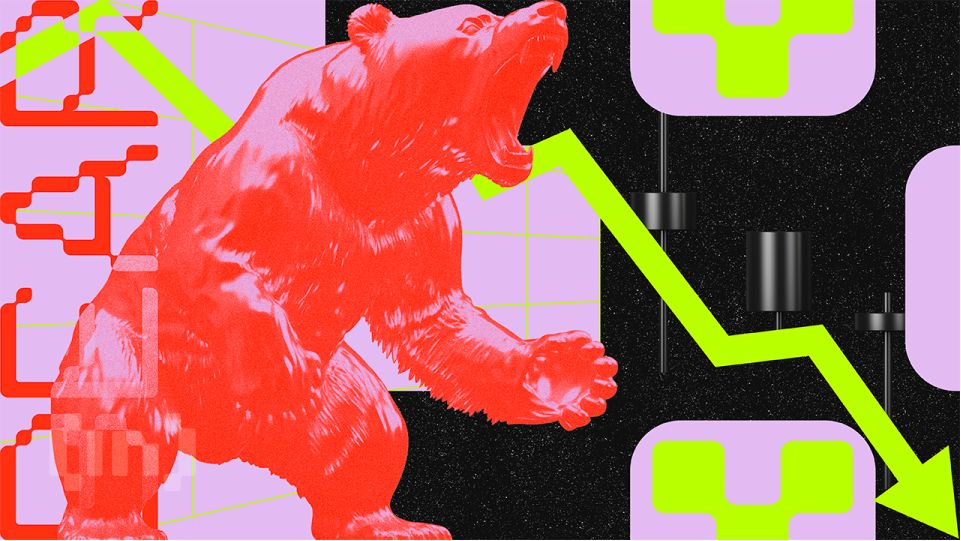
An expert has cautioned that the reverse yen carry trade is currently unfolding, albeit at a slower and more controlled pace.
This could have significant implications not only for traditional financial markets but also for cryptocurrencies like Bitcoin (BTC).
Why Investors Should Pay Attention to the Yen Carry Trade?
For context, the yen carry trade is a strategy in which investors borrow yen at low interest rates and invest the funds in higher-yielding assets, such as the US dollar or technology stocks. The goal is to profit from the difference in interest rates.
Nonetheless, this strategy’s risk arises from currency fluctuations. If the yen appreciates, investors converting the investment back to yen to repay the loan may see reduced or eliminated profits.
According to Michael A. Gayed, this scenario appears to be materializing now.
“The problem today is that those borrowing costs are starting to get more expensive. Traders who were able to access virtually free capital for years are now finding themselves sitting on costly margin positions that they’re potentially being forced to unwind,” he said.
In his recent report, Gayed explained that rising borrowing costs compel traders to offload dollar-denominated assets. This, in turn, heightens market volatility and depresses the prices of risk assets.
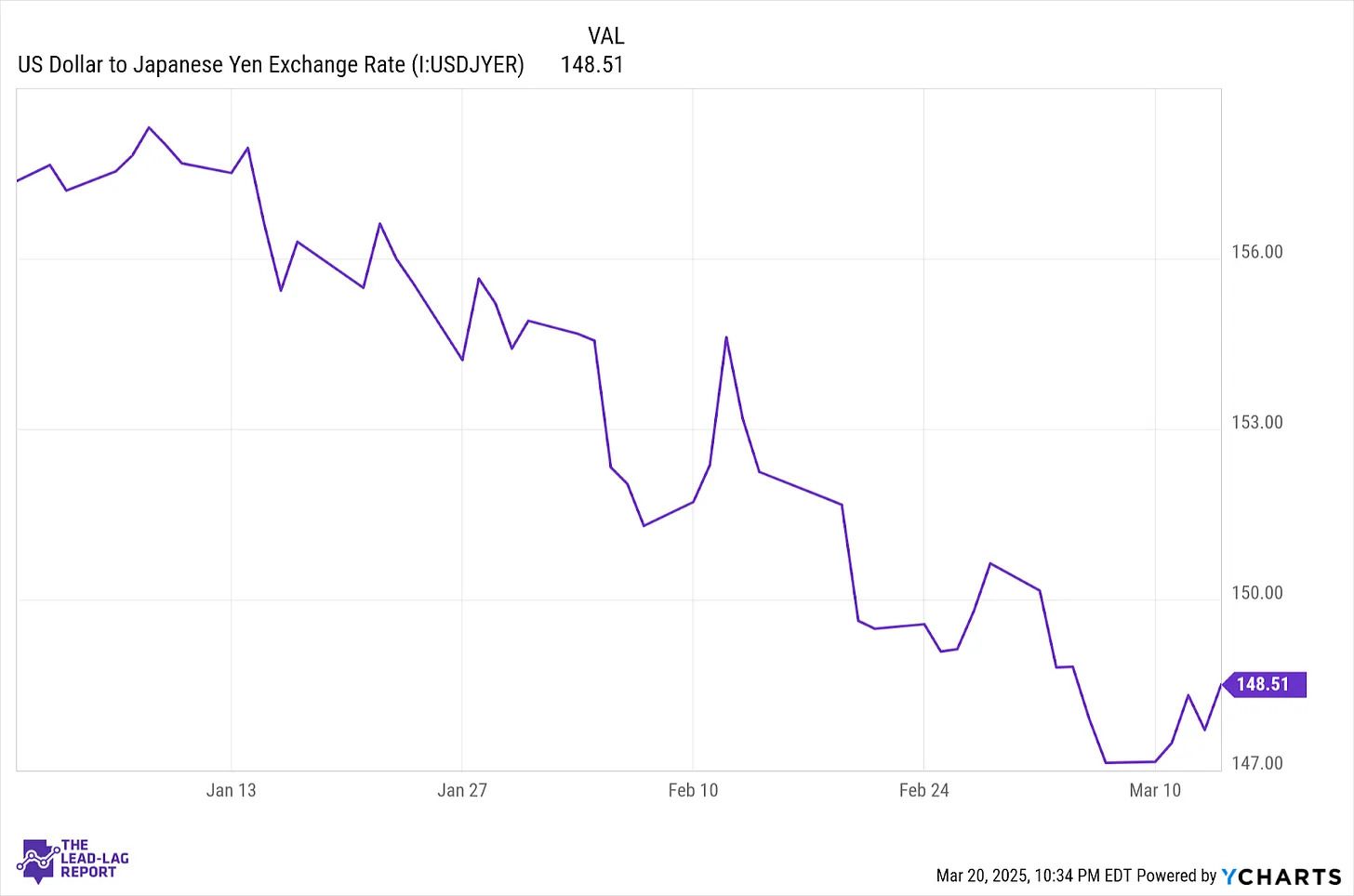
Notably, this happened last year as well. Gayed pointed out that in August 2024, the Bank of Japan’s decision to raise interest rates twice sparked a significant rally in the yen. Yet, at the same time, the S&P 500 saw an approximate 10% correction.
He added that the subsequent rebound alleviated investor concerns. Nevertheless, he believes the real issue is that the situation was never fully resolved.
“Big carry trade unwinds don’t just last a couple of weeks, and conditions are suddenly normalized,” Gayed stressed.
He added that the current market conditions resemble a similar situation. Notably, the Japanese 10-year yield has surged to 1.56%, the highest since 2008. As these yields climb, the yen strengthens, and the carry trade dynamics begin to shift.
“The 10-year yield continues to climb higher and close the interest rate differential on comparable 10-year US Treasury yields. That’s going to continue fueling strength in the yen that may continue into the later stages of 2025. And as long as the yen continues to strengthen, whether it’s quickly and slowly, that’s going to keep unwinding any outstanding carry trade that’s still out there. And it’s probably a lot,” he stated.
Moreover, Gayed suggested that the Bank of Japan will likely continue raising rates. Meanwhile, the Fed might possibly lower them in the coming months, further solidifying his outlook.
He also focused on the correlation between the S&P 500 and the yen. Gayed noted that the yen’s rise preceded the recent S&P 500 pullback by several weeks.
The correction could also be linked to an anticipated US growth slowdown and potential tariffs. Yet, he emphasized that the reverse carry trade is particularly risky due to its potential to escalate quickly, especially in the current macroeconomic climate.
“The market is plenty capable of correcting on its own, given the fears associated with tariffs and slowing economic growth. If you add people being forced to sell their US equity holdings in order to close out their short yen positions on top of that, it’s easy to see how a bad situation quickly becomes worse. And it’s already happening. Japan is still the real risk,” he claimed.
Now, the question is, why will this impact Bitcoin? Given its close correlation with the S&P 500, a correction in the latter could spell trouble for BTC. Analyst Lark Davis pointed out that Bitcoin and the S&P 500 have been closely linked since 2023.
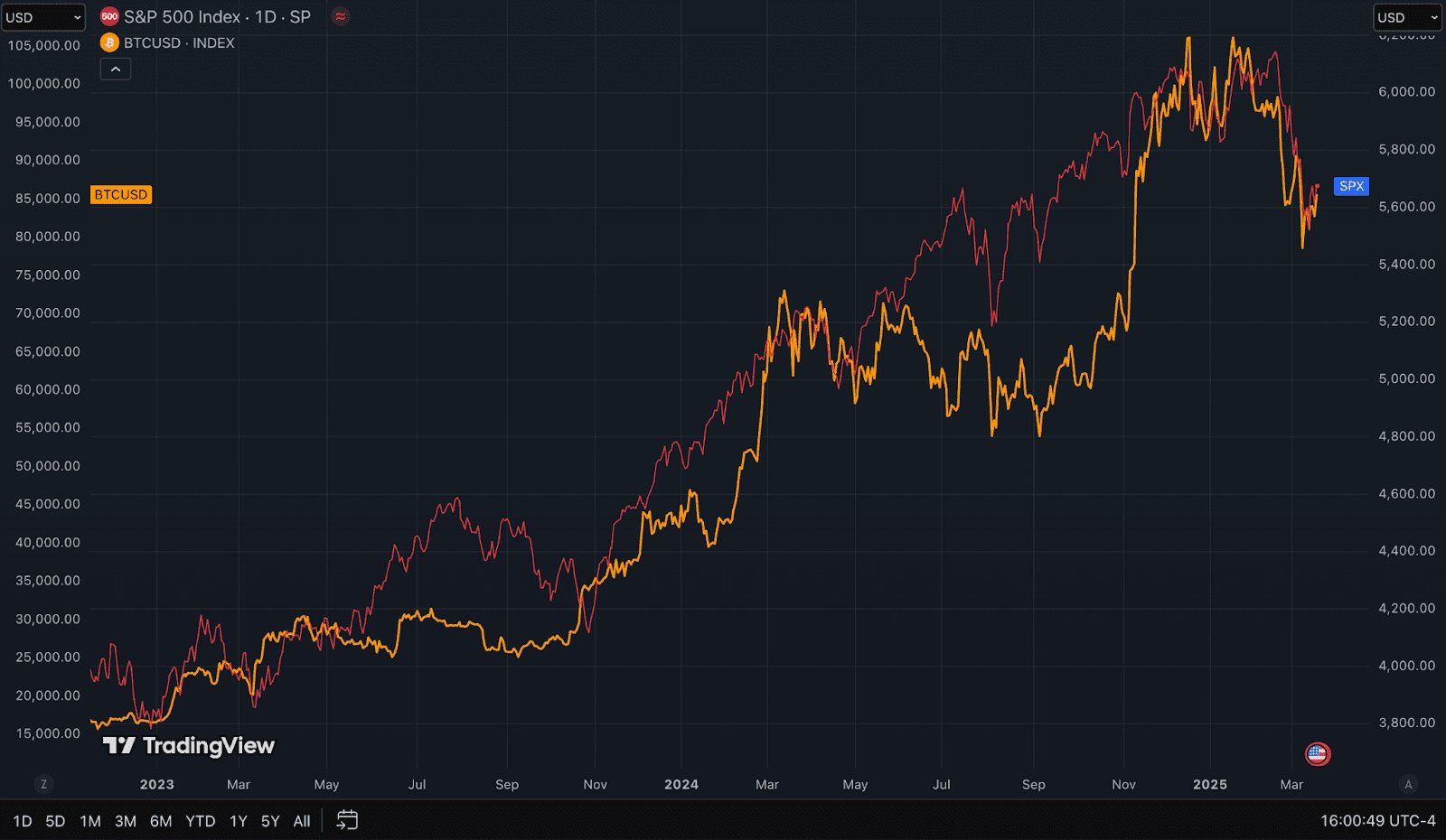
“So as we’re trying to determine where Bitcoin goes from here, the unfortunate truth is that it all probably depends on what happens to the major stock indices,” he noted
Davis also advised crypto investors to monitor the broader economy, the stock market, and the M2 money supply, both in the US and globally.
For now, the largest cryptocurrency continues to navigate volatility ahead of President Trump’s tariff announcement. In fact, BeInCrypto reported that spot Bitcoin ETFs have recorded outflows for three consecutive days.

On the price front, Bitcoin has dipped 3.1% over the past week. At press time, the coin was trading at $85,042, representing small gains of 0.8% over the past day.
Disclaimer
In adherence to the Trust Project guidelines, BeInCrypto is committed to unbiased, transparent reporting. This news article aims to provide accurate, timely information. However, readers are advised to verify facts independently and consult with a professional before making any decisions based on this content. Please note that our Terms and Conditions, Privacy Policy, and Disclaimers have been updated.
Bitcoin
Bitcoin to $250K? Hayes Links Price Surge to Fed’s QE Move

Arthur Hayes, former CEO of BitMEX, has predicted that Bitcoin (BTC) could soar to $250,000 by the end of the year.
However, this prediction is contingent on the US Federal Reserve (Fed) shifting its monetary policy toward Quantitative Easing (QE).
Bitcoin to $250,000, Hayes Predicts
Hayes argues that a halt in Quantitative Tightening (QT) and a return to liquidity injections would trigger a substantial Bitcoin rally.
“If my analysis regarding the interplay of the Fed, Treasury, and banking system is correct, then Bitcoin hit a local low of $76,500 last month, and now we begin the ascent to $250,000 by year-end,” read an excerpt in his latest blog.
This prediction hinges on his belief that central banks, particularly the Fed, will be forced to intervene to support financial markets, ultimately driving Bitcoin higher.
Further, the BitMEX co-founder directly ties Bitcoin’s potential price movement to the Fed’s approach to monetary policy. He argues that the central bank’s response to mounting fiscal pressures will lead to an end of QT and a de facto return to QE.
“Powell proved last week that fiscal dominance is alive and well and that he will do whatever it takes to ensure the Treasury can fund itself at reasonable rates. Therefore, I am confident QT, at least regarding treasuries, will stop in the short to medium term,” Hayes added.
Based on these, Arthur Hayes sees this as a pivotal moment for Bitcoin, emphasizing that the pioneer crypto would “scream higher once this is formally announced.”
Hayes also reinforced his confidence in the prediction, stating that his Bitcoin target is attainable as the bond market, banks, and Congress (which he terms BBC) will pressure the Fed into action.
British financial expert Raoul Pal supports the thesis of a bullish outlook for Bitcoin price. The former Goldman Sachs executive pointed to macroeconomic indicators that suggest a Bitcoin rally is imminent.
Raoul Pal shared a chart correlating the global M2 money supply and Bitcoin’s price. Based on history, Bitcoin tends to rise around 10 weeks after M2 increases, with Pal’s analysis suggesting that Bitcoin may soon enter a bullish phase.
“The waiting game is almost over…the 10-week lead is my preferred… but,” Pal remarked.
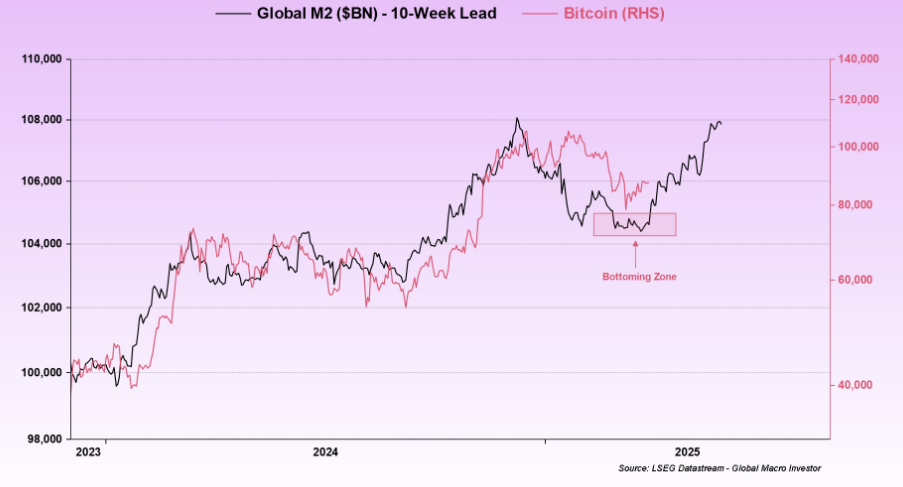
QCP Capital’s Stagflation Warning
Adding another layer to the macroeconomic picture, analysts at QCP Capital warn that if stagflation takes hold, the Fed could lean toward hiking rates instead of cutting them. Such an action would complicate the bullish outlook for Bitcoin.
“Markets continue to price 2.5 cuts in 2025. The Fed finds itself in a tight corner with consumer confidence and soft data coming in weak which may portend weaker GDP in Q2. At the same time, tariff-induced inflationary pressures could start building after April 2,” the analyst wrote.
The optimism comes despite Bitcoin logging its worst first quarter (Q1) performance in seven years. This notwithstanding, analysts point to a bullish momentum, suggesting that a price recovery is on the horizon.
“Sellers have dried up, and buyers seem comfortable with current price levels – setting the stage for a structural supply shortage. April-May could turn into a consolidation zone – a calm before the next impulse,” stated market analyst Axel Adler Jr.
Veteran investors are also increasing their Bitcoin holdings, signaling a phase of accumulation that often precedes strong price rallies. Market data also indicates that declining selling pressure from Bitcoin holders is paving the way for a potential push toward $90,000.
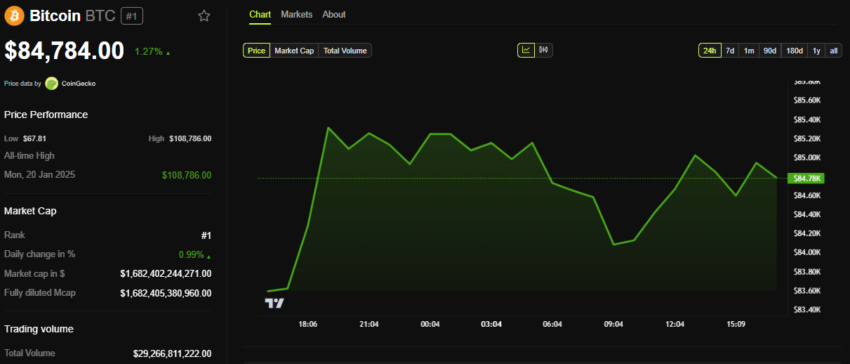
Meanwhile, Standard Chartered has noted Bitcoin’s growing role as an inflation hedge. This further solidifies the pioneer crypto’s place as a macroeconomic asset in uncertain financial times.
Nevertheless, as macroeconomic concerns continue challenging Bitcoin’s attractiveness, Gold is progressively presenting as an alternative store of value. BeInCrypto also reported that gold is outshining Bitcoin as a haven amid Trump’s 2025 tariff chaos.
Disclaimer
In adherence to the Trust Project guidelines, BeInCrypto is committed to unbiased, transparent reporting. This news article aims to provide accurate, timely information. However, readers are advised to verify facts independently and consult with a professional before making any decisions based on this content. Please note that our Terms and Conditions, Privacy Policy, and Disclaimers have been updated.
Bitcoin
US Dollar Index Drops – What Does It Mean for Bitcoin?

Amid the recent implementation of President Trump’s “Liberation Day” policies, the US Dollar Index (DXY) has plummeted to its lowest level since mid-October 2024. This signaled a turbulent time for the greenback.
Despite the downturn, some analysts believe the weakening dollar could fuel short-term gains for Bitcoin (BTC).
Could Bitcoin Benefit From a Weaker Dollar?
The DXY, a key measure of the US dollar’s strength against a basket of major currencies, has been under pressure amid a combination of factors. Growing concerns over a potential recession and escalating global trade tensions have contributed to this downtrend.
After reaching a two-year high in early January, the DXY has experienced a steady decline. Furthermore, it has shed nearly 4% in the first quarter alone.
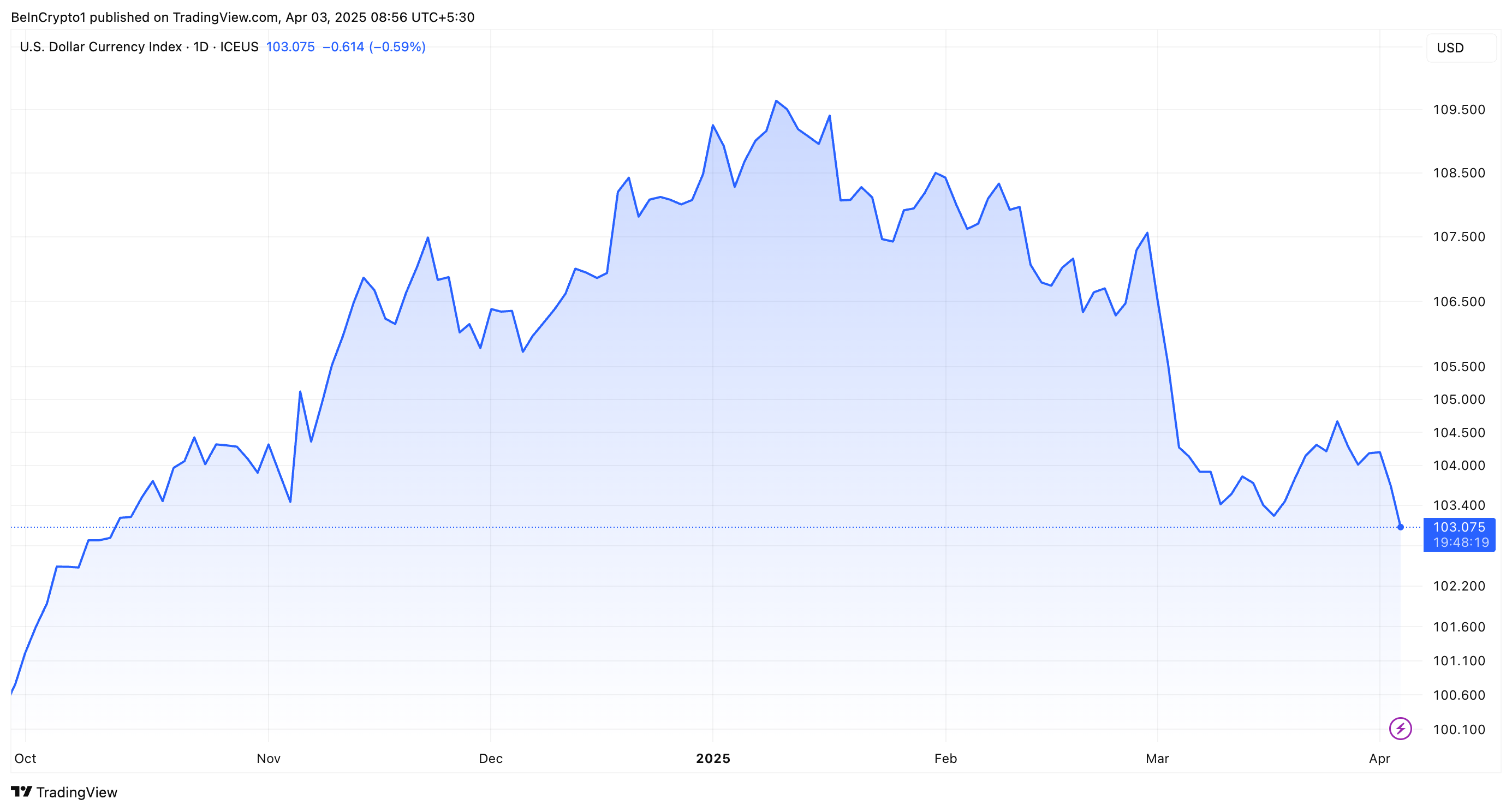
Economist Peter Schiff highlighted the dire state of the DXY in the latest X (formerly Twitter) post.
“The US Dollar Index has fallen to its lowest level since Oct. and looks like it’s headed much lower,” he wrote.
Schiff emphasized that contrary to expectations that a strong US dollar might alleviate the impact of tariffs on American consumers, the reality of a weakening dollar will have the opposite effect. Therefore, this exacerbates the financial strain from tariffs, making them more burdensome for consumers.
BeInCrypto reported that on April 2, 2025, President Trump implemented the new “Liberation Day” tariffs. These reciprocal tariffs enforce a minimum 10% duty on all imports. Nonetheless, they have raised concerns about a potential global trade war and further weakened the dollar’s value.
A Reuters report highlighted that the dollar slid against the yen. Meanwhile, the euro gained 0.3% to trade at $1.08, reflecting market unease over the tariff announcement.
However, it’s not all bad news—at least not for crypto. Some market observers believe Bitcoin could emerge as a key beneficiary of the dollar’s woes.
Ciara Sun, Founder and Managing Partner at C² Ventures noted on X that the likelihood of multiple Federal Reserve rate cuts in 2025 is growing. This move could further weaken the DXY and boost Bitcoin’s attractiveness.
“The Dollar Index shows signs of slowing momentum, potentially favoring risk assets,” Sun remarked.
Sun’s analysis aligns with the inverse correlation between Bitcoin and the US dollar, as outlined in a CoinGecko report from late 2024.
“When the dollar weakens, Bitcoin often strengthens, making it an attractive alternative,” the report noted.

Adding to the bullish sentiment for Bitcoin, Arthur Hayes, the former CEO of BitMEX, predicted a significant rally for the cryptocurrency.
“If BTC can hold $76,500 between now and US tax day April 15, then we are out of the woods. Don’t get chopped up!,” Hayes claimed.
This statement follows the executive’s prediction that Bitcoin could soar to $250,000 by year-end. However, this outcome is contingent upon the Federal Reserve adopting Quantitative Easing (QE) to support the markets.
Still, the road ahead is far from clear. Bitcoin may enjoy short-term gains amid the dollar’s slump. Yet, the overarching economic implications of shifting US monetary policy and ongoing global tensions continue to pose significant risks.

As of now, Bitcoin has felt the impact of the market uncertainty. It declined 1.5% in the past day to a trading value of $83,389. Similarly, the broader cryptocurrency marked has experienced a decrease, with the total market capitalization falling 3.4% within the same timeframe.
Disclaimer
In adherence to the Trust Project guidelines, BeInCrypto is committed to unbiased, transparent reporting. This news article aims to provide accurate, timely information. However, readers are advised to verify facts independently and consult with a professional before making any decisions based on this content. Please note that our Terms and Conditions, Privacy Policy, and Disclaimers have been updated.
-

 Regulation20 hours ago
Regulation20 hours agoKraken Obtains Restricted Dealer Registration in Canada
-

 Altcoin16 hours ago
Altcoin16 hours agoHere’s Why This Analyst Believes XRP Price Could Surge 44x
-

 Altcoin22 hours ago
Altcoin22 hours agoFranklin Templeton Eyes Crypto ETP Launch In Europe After BlackRock & 21Shares
-

 Bitcoin22 hours ago
Bitcoin22 hours agoLummis Confirms Treasury Probes Direct Buys
-

 Altcoin15 hours ago
Altcoin15 hours agoHow Will Elon Musk Leaving DOGE Impact Dogecoin Price?
-

 Altcoin12 hours ago
Altcoin12 hours agoFirst Digital Trust Denies Justin Sun’s Allegations, Claims Full Solvency
-

 Ethereum14 hours ago
Ethereum14 hours agoWhy A Massive Drop To $1,400 Could Rock The Underperformer
-

 Altcoin13 hours ago
Altcoin13 hours agoWill Cardano Price Bounce Back to $0.70 or Crash to $0.60?












